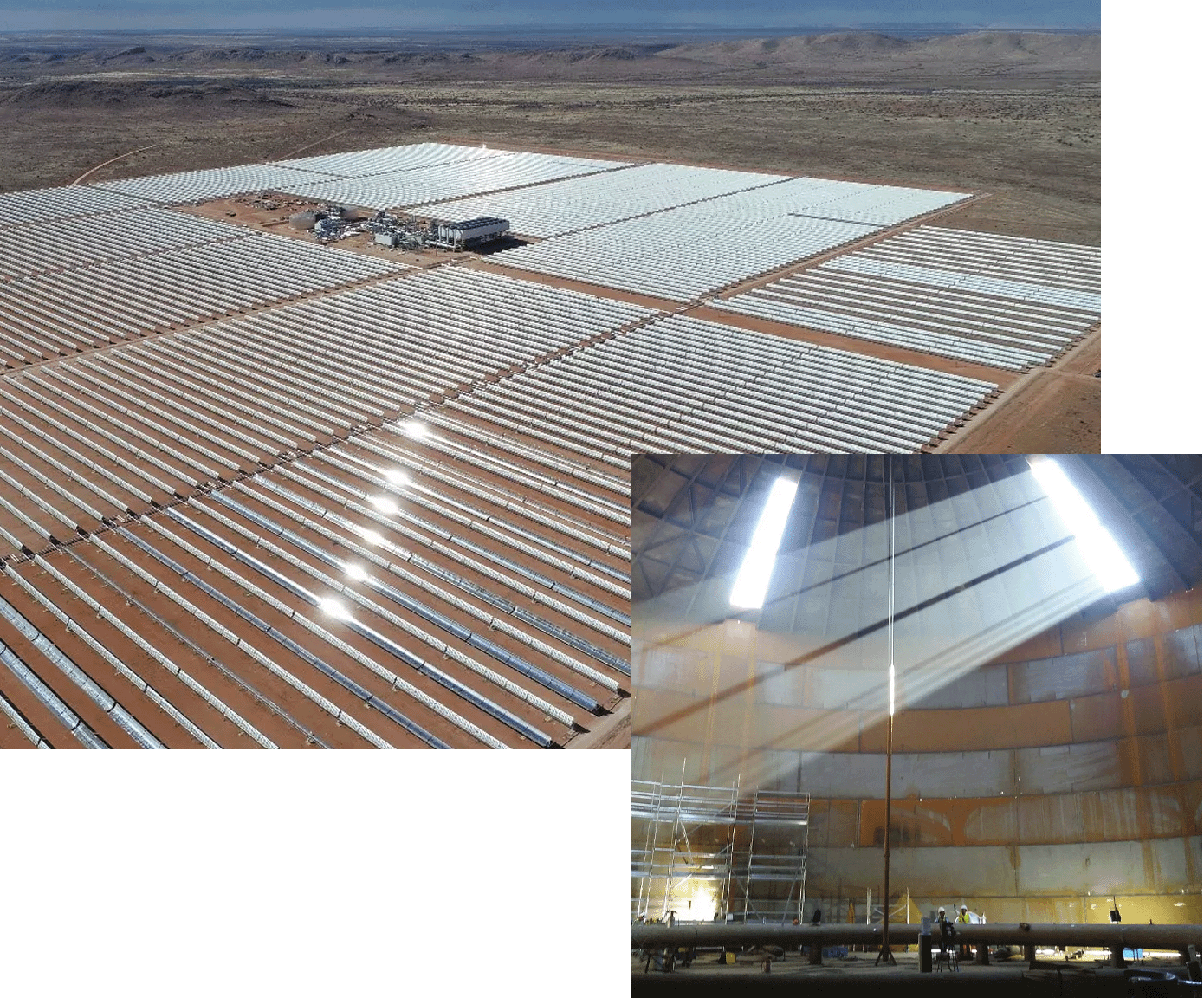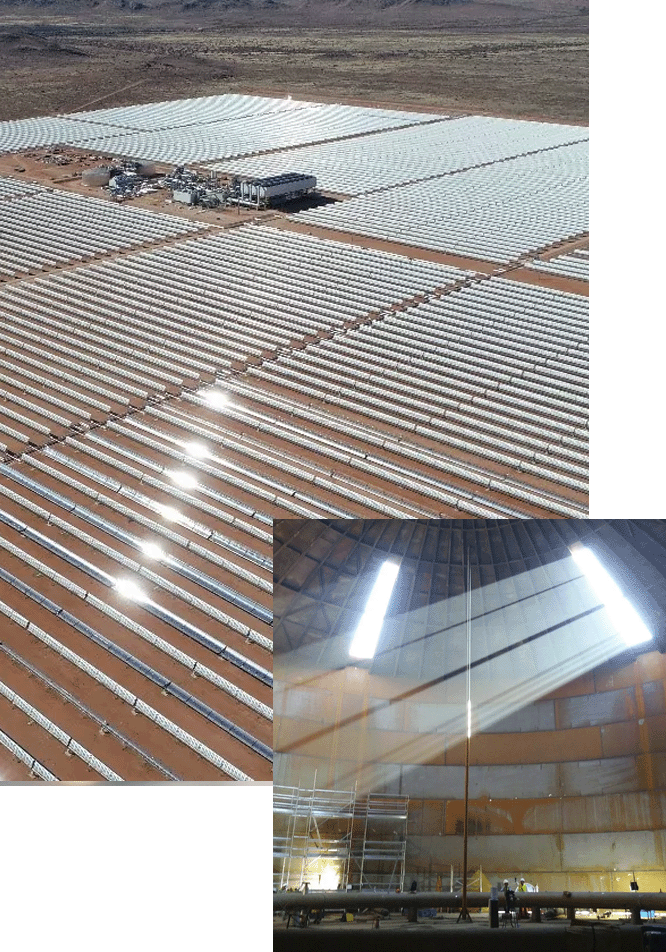Go back
Ilanga: a new Concentrated Solar Power
- Client: Karoshoek Solar One (RF) Proprietary Limited
- Date: 2014- 2022
- Location: Upington (Sudáfrica)
- Sector: Energy & utilities
- Subsector: Thermal Solar Power
- Investment: 600 M€
Go back
Ilanga: a new Concentrated Solar Power


South Africa’s energy sector is undergoing significant changes, with the state shifting focus from fossil fuels to sustainable and clean energy sources – such as solar and wind power. The South African continent is positioned to deliver significant solar energy with more than 2,500 hours of sunshine annually.
The privatization of electricity power has enabled private utilities to enter this growing market where demand is boosted due to supportive government policies.
Ayesa’s Energy and Industrial Facilities division was crucial in constructing the Ilanga-1 Concentrated Solar Power (CSP) plant in Upington, the Northern Cape province, which can generate up to 100 megawatts. The plant was handed over to its owner – Karoshoek Solar One (RF) Proprietary Limited in 2018 and will supply electricity to the national grid through Eskom, the South African electricity public utility.
The plant uses cylindrical-parabolic mirrors to concentrate heat onto tubes carrying thermal fluid to supply clean energy to approximately 100,000 homes. The design of these cylindrical parabolic mirrors focuses incoming light onto a specific focal point. They have a curved surface that resembles a parabola, which causes incoming light rays to reflect off the mirror and converges at a single point. In solar power plants, the mirror arrangement concentrates sunlight onto a tube containing a heat transfer fluid, such as oil or water. The concentrated heat is then used to generate steam, which drives a turbine to produce electricity. This method is more efficient than traditional flat-panel solar arrays because it enables concentrated solar energy and can operate at higher temperatures.
We provided services on the CSP Ilangalethu project in three distinct phases with various scopes: basic engineering, property construction engineering, and property operation engineering.
In the first phase, Ayesa provided basic engineering services (e.g. feasibility, conceptual design, project management, risk assessment, cost estimations), which formed part of the COBRA group’s bidding process, which secured the consortiums’ Engineering Procurement Construction (EPC) contract for the plant. Karoshoek Solar One (RF) Proprietary commissioned Ayesa to provide property engineering services in the second phase. The team focused on two essential tasks: reviewing the detailed engineering as part of the EPC scope and supervising the works on-site of the multi-disciplinary project team, which included Project Management, Mechanical, Electrical, and Civil engineering specialists.
The plant consists of 266 loops (360,000 mirrors / 12,768 parabolic troughs), covering 870,000 square meters of curved mirrors, a molten salt storage system, which allows for thermal energy storage for up to 5 hours, allowing the plant to generate energy for that time period without solar radiation. The plant is expected to supply clean and dispatchable energy to around 100,000 homes and save 90,000 tons of CO2 emissions per year over a 20-year period.
Ayesa Energy Division offers comprehensive solutions for renewable energy generation and high-voltage electrical transmission, with extensive experience in international solar projects since 2006. This expertise across the three critical phases, from the feasibility/planning/basic design to the detailed engineering, procurement, and construction and operational phases, our team ensured the project met the required output standards and specifications, minimized risks, reduced costs, and guaranteed timely project delivery. By providing property operation engineering to the owner and our client Karoshoek Solar One (RF) Proprietary, we helped them maintain and optimize the performance of this plant and associated infrastructure.
In terms of UN SDGs, (Sustainable Development Goals), the plant has created approximately 1,500 jobs during its construction phase and recently completed a technical training course for 50 prospective employees. The project aligns with the government’s four accords, which include basic education, skills development, local procurement, and the green economy. Additionally, the EPC consortium has engaged in local socio-economic development in nearby communities.
100megawatts
of power
870000m2
of curved mirrors
100000homes
supplied with clean energy
90000tons of CO2
avoided per year
Our goal is to provide you with the best services for your needs